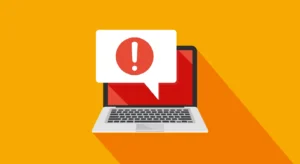False Expectations about Supplier Networks
Repeatedly, we have heard from our clients who own Purchasing Suites, such as Coupa or Ariba, that they are still struggling to get Vendor participation. As a result, they are forced to invest more in “Onboarding” programs to increase the volume of Vendors that they can process through the Supplier Network.
There is often a false expectation with these P2P systems and Supplier Network components that all vendors and all transactions are supposed to go through this process. As agreed by industry analysts such as Gartner, these expectations are unrealistic because these supplier network management systems are not designed to accommodate all transaction types, much less all vendors, no matter what type of invoice they provide you with.
Part of the problem is that the upfront investment is relatively high, which prompts business leaders and executives to expect more automation for their money. This, in turn, creates an incentive for the software provider and their salespeople to overpromise, leading to inevitable disappointment.
A Word about Diminishing Returns:
Now, let’s talk about economics: The Law of Diminishing Returns says, “Profits or benefits gained from something will represent a proportionally smaller gain as more money or energy is invested in it.” Many of our clients at DataServ are in the manufacturing industry, and we see this issue arise frequently: Eventually, an additional factor of production results in lessening output or impact. To affect the behavior of your Suppliers, you should be realistic about the goals you set there. Goals should be based on research done with your Purchasing team, your supplier relationships, and your understanding of the market conditions in which your company operates. Consider your vendor management philosophy: Are you highly dependent upon each other, or are you more of a one-sided relationship? Who needs whom more?
Setting Reasonable Expectations
Once you understand your needs, you can set reasonable expectations about how much value you can gain from the Supplier Network. Remember, it does not have to be a 100% solution to bring value; You’ll have to think beyond this one solution and look at your entire business to determine precisely how much value it can bring. Does that equate to the price – because these P2P solutions can be very expensive – or is the Return on Investment not high enough to justify it?
How to Move Forward Without Supplier Networks
Our advice if you already own a P2P Suite with a Supplier Network is:
- Get what you can there, and then move on.
- Do not continue to spend increasing amounts of money as you chase the tail of vendors who are not likely to convert.
- Plan future investments to supplement the process to achieve true automation.
This can require several projects but result in a highly automated, complete outcome. We have seen companies spend over seven years attempting to onboard all their vendors without succeeding. Some companies have used multiple years of annual supplier network automation budgets trying to wring more transactions out of their vendors, only to be disappointed with the results.
How to Focus on Internal Changes
Can’t justify the upfront investment or the steep vendor onboarding curve required for Purchase to Pay / Supplier Network software? Focus on automation projects that involve more manageable internal changes, such as AP Invoice Automation.
To explore how DataServ solutions can help your AP workflow improve its returns, contact our team or schedule a demo today.







